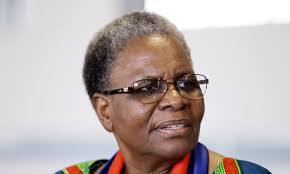PRISCA MAYUMBELOCITIES ARE engines of innovation and economic growth. People migrate from rural to urban areas in search of employment and better living standards. According to the Namibia Statistics Agency, Windhoek’s population will increase by an estimated 33% in 2021. This figure is obtained using an exponential annual growth rate of 3.3% between 2011 and 2021.
Urbanisation comes with an increase in the number of vehicles on roads and the expansion of settlements. To accommodate the growing demand for residential and commercial space, urban boundaries are extending to the furthest parts of the city, resulting in longer travel hours.
Mobility in urban areas is often an advantage for the economically well-off as cities and towns are predominantly designed to accommodate private vehicles. For low income earners, it can be very expensive. Informal settlements are often far from the city centre and the journey to work and schools can be exhausting in the absence of an efficient public transport system.
According to the sustainable urban transport master plan for Windhoek – including Rehoboth, Okahandja, and Hosea Kutako international airport – roughly 87% of the population are low-income earners who cannot afford cars. On average, they spend 24% of their disposable income on transport; 52% of low-income earners can barely afford public transportation, as it requires half of their monthly income. As a result, their ability to access jobs, education and social participation is affected.
Mobility is a key to development. However, the growing use of personal vehicles results in traffic congestion, road accidents, noise pollution, emissions, and social segregation. This presents an urgent need for developing countries such as Namibia to consider sustainable transport solutions.
Sustainable transport focuses on providing an accessible, safe, affordable operational efficient transport system, while aiming for low environmental impact; a system that makes a positive contribution to the environment and the social and economic sustainability of the communities they serve. Sustainable urban mobility include non-motorised transport and public transport.
Urban and town planners need to plan towns that provide for transport infrastructure. It is therefore essential to understand the evolving transport policies so that they can facilitate development supportive of the transport network.
Cities and towns not developed with transport services in mind present a challenge to successfully implementing an efficient public transport network. For example, accessibility is improved by reducing the walking distance to public transport facilities such as bus stops by placing them within 400 to 600 m of every household. Towns developed without prior transport planning make it difficult to retrofit.
MOVING FORWARD
The challenge lies in offering appropriate infrastructure and services while reducing negative impacts. Most negative is the emission of greenhouse gases which affects the health of citizens. This can be reduced by the number of cars on the road. There should be a shift towards electric and hybrid vehicles in order to reduce individuals’ carbon footprints. People can also play a role by switching to public transportation and non-motorised transport.
An integrated transport system that considers all modes such as walking, cycling, and public transport is ideal. However, it requires a better understanding of what mode is best for specified areas. Where appropriate, two-metre wide separate pavements can be designed to accommodate cyclists, pedestrians and people in wheelchairs. Priority can be given to each mode to avoid interference between the different categories.
Smart mobility enhances the efficiency of the transport network. Using technology can promote more sustainable transport such as car sharing, bike sharing, and ride sharing. Shared mobility can also reduce the cost of private car ownership.
Bringing services such as schools, shopping centres and health facilities closer to the people reduces travelling time and traffic congestion. Effective systems ensure that development happens in close proximity to residential areas by promoting mixed land use.
While it will not happen overnight, there is potential to increase energy efficiency in Namibia’s transport sector, to improve safety and to reduce the environmental and social impact. It will also require that all stakeholders be socially included in the developmental process.
Stay informed with The Namibian – your source for credible journalism. Get in-depth reporting and opinions for
only N$85 a month. Invest in journalism, invest in democracy –
Subscribe Now!










